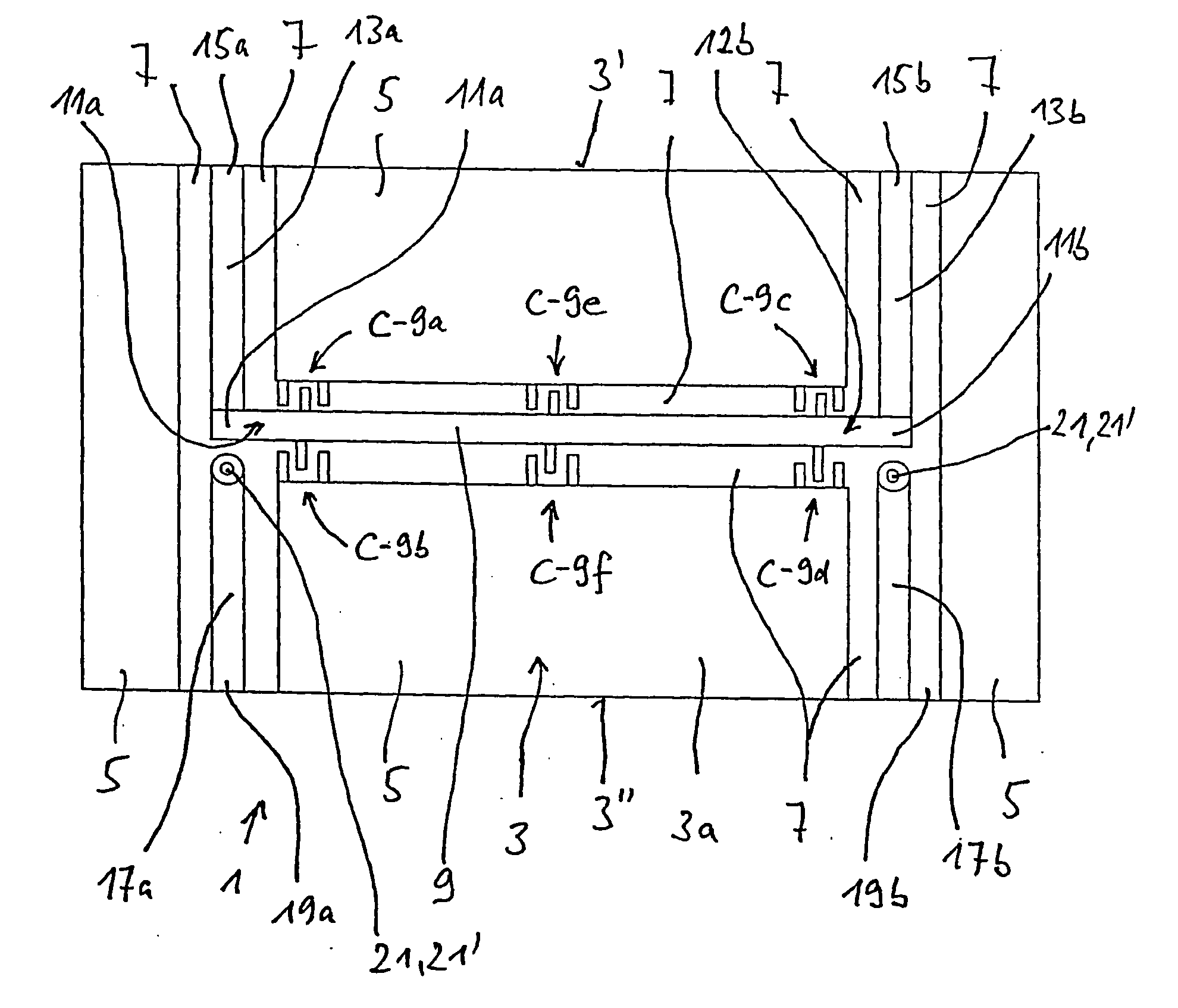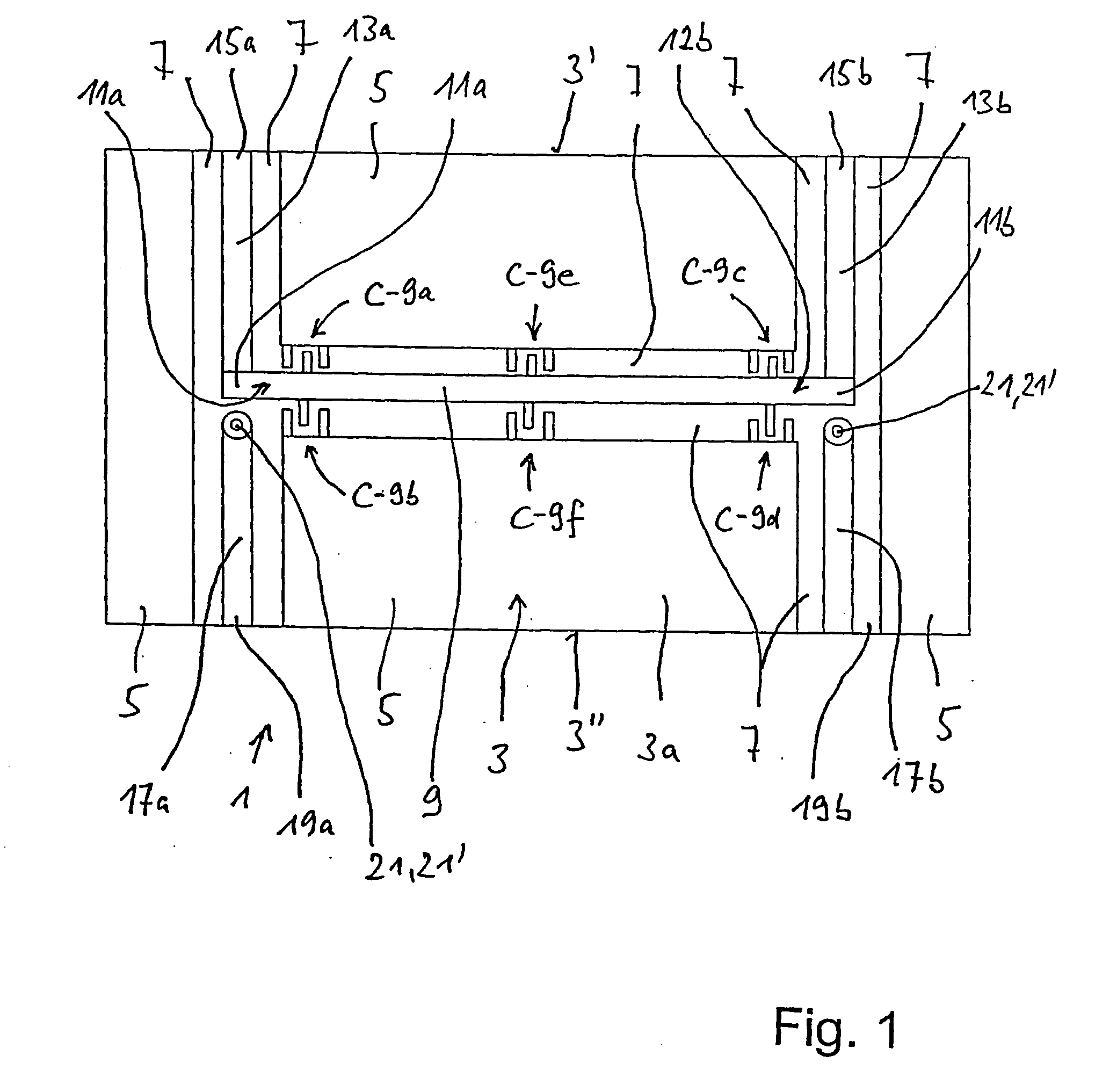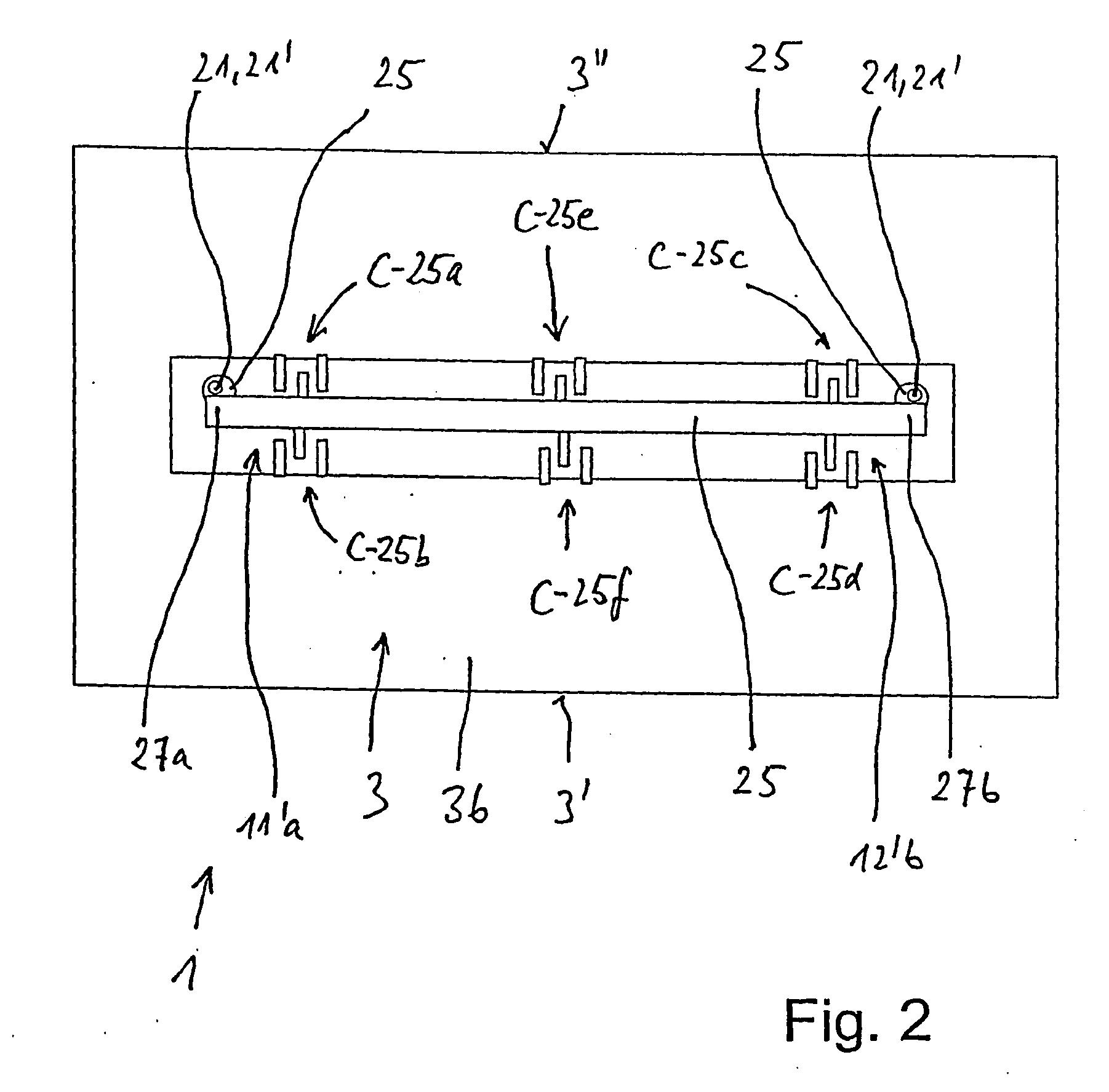HF Coupler or HF Power Splitter, Especially a Narrow-Band and/or 3DB Coupler or Power Splitter
a power splitter and narrowband technology, applied in the direction of electrical devices, multiple-port networks, coupling devices, etc., can solve the problems of high space requirements, relatively large electrical losses, and high cost of high-quality pcb materials, and achieve low space requirements, high directional focus, and low electrical losses
- Summary
- Abstract
- Description
- Claims
- Application Information
AI Technical Summary
Benefits of technology
Problems solved by technology
Method used
Image
Examples
Embodiment Construction
[0035]FIG. 1 shows a plan view of a first exemplary illustrative non-limiting coupler or power splitter 1 which is formed on a substrate 3 in the form of a printed circuit board.
[0036]Visible on the substrate 3 are four surface areas 5, on the upper side 3a of the substrate visible in FIG. 1, which are electrically-galvanically separated from one another by cut-outs 7. This surface area 5 involves earthing surfaces 5.
[0037]Formed in the cut-outs 7 is a first coupling zone 9 in stripline technology, which runs in a first direction or longitudinal direction on the substrate 3.
[0038]Provided at the beginning 11a and end 11b of this coupling zone 9, running transversely, are a first and second connection line 13a and 13b, which lead to connections 15a and 15b on the one substrate edge 3′.
[0039]The non-conductive cut-out area 7 shown in the plan view of the exemplary illustrative non-limiting implementation according to FIG. 1 is formed as H-shaped. In the immediate extension of the conn...
PUM
 Login to View More
Login to View More Abstract
Description
Claims
Application Information
 Login to View More
Login to View More - R&D
- Intellectual Property
- Life Sciences
- Materials
- Tech Scout
- Unparalleled Data Quality
- Higher Quality Content
- 60% Fewer Hallucinations
Browse by: Latest US Patents, China's latest patents, Technical Efficacy Thesaurus, Application Domain, Technology Topic, Popular Technical Reports.
© 2025 PatSnap. All rights reserved.Legal|Privacy policy|Modern Slavery Act Transparency Statement|Sitemap|About US| Contact US: help@patsnap.com



